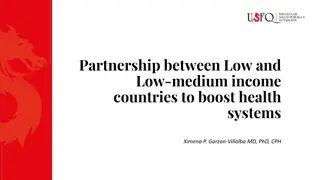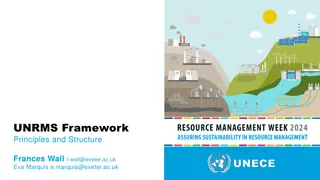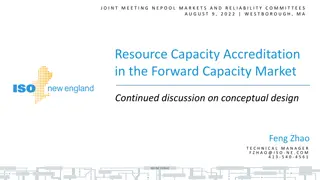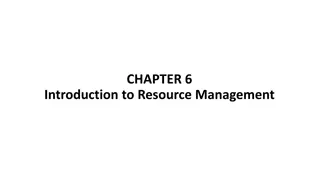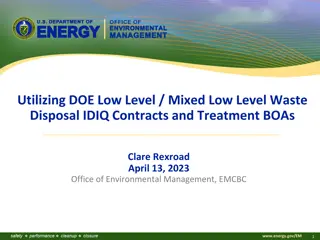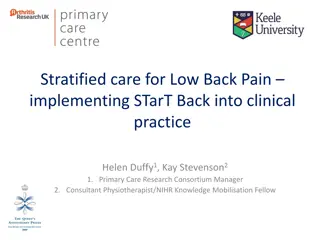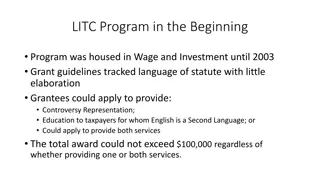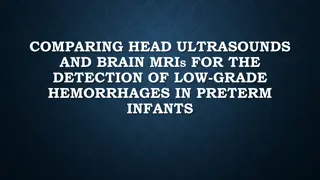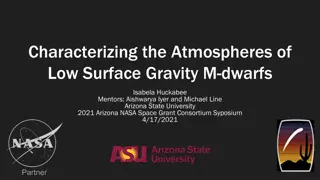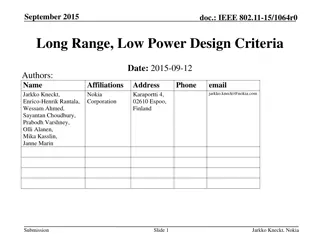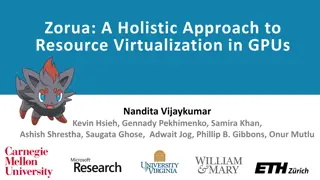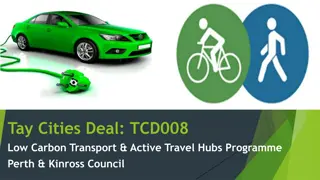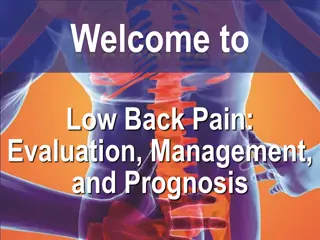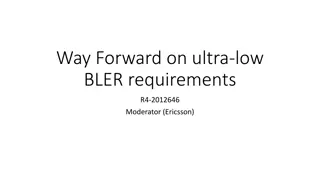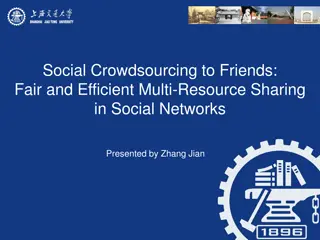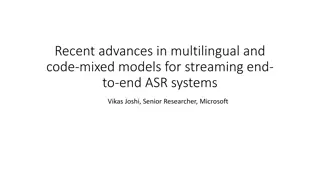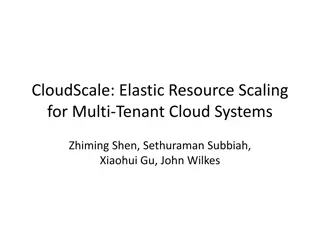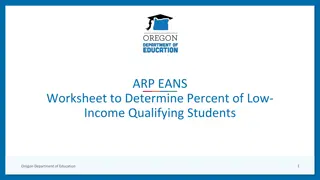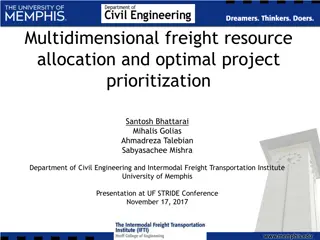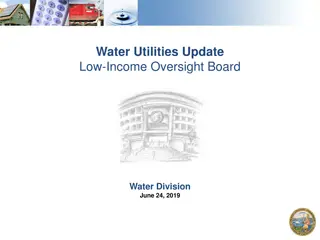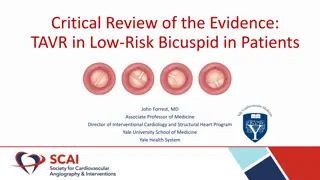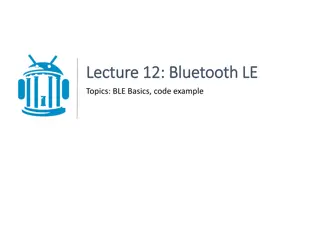Efficient Resource Mobilization and Management Strategies by Dr. Abraham Maliet Mamer
This content discusses efficient resource mobilization and management strategies, emphasizing the importance of understanding the typical cycle of resource regime, defining resources, identifying resources, and mobilizing resources effectively. It provides insights into resource allocation methodolo
1 views • 12 slides
Low Pay Household Estimates in Rural India
Analysis of data from the Periodic Labour Force Survey reveals estimates of households with monthly per capita earnings below a threshold in Rural India. The study, presented by Vasavi Bhatt, focuses on the characteristics of low earnings households and highlights the importance of decent work and i
1 views • 8 slides
Partnership between Low and Low-medium income countries to boost health. systems
This presentation highlights the common challenges faced by low and low-medium income countries in boosting their health systems, such as political instability, lack of funding, and unstructured healthcare systems. It emphasizes the importance of collaborative efforts between these countries to addr
6 views • 6 slides
Comprehensive Overview of UNRMS Framework and Principles
UNRMS (UN Resource Management System) aims to promote sustainable resource management globally through innovative frameworks and principles. It encompasses various natural resources and supports sustainability at different scales. Stakeholders can use it to assess projects against environmental, soc
5 views • 10 slides
Academic Senate Resolutions and Low-Cost Thresholds in Higher Education
The Academic Senate addresses the adoption of open educational resources (OER) and low-cost materials to support academic freedom and compliance with legislative requirements. The resolution discusses the definition of low-cost resources and the variability among California Community Colleges in set
2 views • 9 slides
Understanding Horizontal Distribution of Air Pressure and Pressure Belts on the Globe
The horizontal distribution of air pressure and pressure belts on Earth is characterized by isobars, indicative of high and low pressure systems. The regular zonal distribution of pressure belts is affected by the uneven distribution of land and water. Pressure belts are not solely induced by temper
1 views • 7 slides
Gradual Fine-Tuning for Low-Resource Domain Adaptation: Methods and Experiments
This study presents the effectiveness of gradual fine-tuning in low-resource domain adaptation, highlighting the benefits of gradually easing a model towards the target domain rather than abrupt shifts. Inspired by curriculum learning, the approach involves training the model on a mix of out-of-doma
0 views • 17 slides
Understanding Low Level Concerns in Safeguarding Children and Young People
Safeguarding children and young people involves addressing low level concerns, which may not meet harm thresholds but still require attention. Examples include inappropriate behavior towards children and breaches of conduct. The importance of setting out policies for low level concerns is highlighte
0 views • 18 slides
Forward Capacity Market Resource Capacity Accreditation Discussion
Discussion on improvements to resource capacity accreditation in the Forward Capacity Market to support a reliable, clean-energy transition by accrediting resource contributions effectively as the resource mix evolves. Covers conceptual design, stakeholder schedule, and review of proposed enhancemen
0 views • 61 slides
Population Resource Regions and Zelinsky's Classification
Geographers have long studied the relationship between population growth and resource adequacy, leading to the concept of Population Resource Regions (PRR) by W. Zelinsky. Zelinsky identified five types of PRR based on population-resource ratios, ranging from Type A with high resource utilization po
0 views • 8 slides
Introduction to Resource Management in Construction Industry
The construction industry operates in a dynamic environment with time, money, and resource constraints. This chapter focuses on resource management, optimization methods, and applications in construction. It covers the definition of resources, types of resources, and the importance of optimization i
2 views • 15 slides
Utilizing DOE Low-Level & Mixed Low-Level Waste Disposal Contracts
EMCBC manages disposal and treatment contracts for Low-Level Waste (LLW) & Mixed Low-Level Waste (MLLW). Eligible users include DOE offices, prime contractors, and subcontractors. Services cover various waste types including radioactive materials, sealed sources, and TSCA-regulated waste. Specific c
0 views • 19 slides
Implementing STarT Back for Stratified Care in Low Back Pain Management
Helen Duffy and Kay Stevenson discuss the implementation of STarT Back, a screening tool designed to stratify low back pain patients for matched treatments based on modifiable risk factors. The tool is quick, validated, and helps clinicians identify high, medium, and low-risk patients for tailored p
0 views • 21 slides
Evolution of Low Income Taxpayer Clinics (LITC) Program
The Low Income Taxpayer Clinics (LITC) Program has evolved over the years to ensure fairness and integrity in the tax system for low-income taxpayers and those who speak English as a second language. Initially housed in Wage and Investment, the program now reports to the National Taxpayer Advocate.
0 views • 10 slides
Detection of Low-Grade Hemorrhages in Preterm Infants: Ultrasounds vs. MRIs
This study compares the effectiveness of head ultrasounds and brain MRIs in detecting low-grade hemorrhages in preterm infants. It discusses the incidence of intraventricular hemorrhage (IVH) in very low birth weight infants, classification of IVH, risk factors for IVH, outcomes related to IVH grade
9 views • 33 slides
Evaluation of Low-Latency Services in IEEE 802.11-23/1530r1
This document discusses the evaluation of supported low-latency services in the context of IEEE 802.11-23/1530r1, focusing on the reliability of WLAN, throughput, latency, and MPDU loss. It addresses the challenges in supporting new low-latency services such as AR/VR and industrial IoT, particularly
1 views • 11 slides
Insights from ET-ISB Workshop on Low-Frequency Noise and GWADW 2021
The ET Instrument Science Board held a workshop focusing on addressing key challenges related to low-frequency noise in gravitational wave detectors. Experts discussed topics such as mirror temperature, dealing with low-frequency noise realities, and facility limits. The workshop highlighted the sig
0 views • 13 slides
Mechanism of Low-Energy Nuclear Reactions in Low-Temperature Plasma
This work discusses nuclear-chemical processes underlying low-energy nuclear reactions in low-temperature plasma environments, focusing on the initiation of artificial radioactivity in metal cathodes under protium- and deuterium-containing nonequilibrium plasma conditions. The role of electrons with
4 views • 6 slides
Understanding Low Band Receive Antennas and the Beverage Flex-4X System
Low band receive antennas, including the Beverage Flex-4X system, are crucial for long-distance propagation on bands such as 160, 80, 60, and 40 meters. Operating on low bands presents challenges like large wavelengths, high levels of QRM and QRN, and the need for effective noise reduction strategie
1 views • 24 slides
Characterizing the Atmospheres of Low Surface Gravity M-dwarfs
This study focuses on characterizing the atmospheres of low surface gravity M-dwarfs, which are promising hosts for exoplanets. The research delves into why low gravity M-dwarfs appear brighter in the infrared than typical M-dwarfs, presenting an improved base model with added opacities. The finding
0 views • 8 slides
IEEE 802.11-15/1064r0 Long Range, Low Power Design Criteria Study
Submission on design criteria for Long Range, Low Power (LRLP) in WLAN systems aiming to enhance transmission reliability and range while ensuring compatibility with existing WLAN networks. The key technical components include ultra-low power consumption, communication range extension, and coexisten
0 views • 8 slides
Learning-Based Low-Rank Approximations and Linear Sketches
Exploring learning-based low-rank approximations and linear sketches in matrices, including techniques like dimensionality reduction, regression, and streaming algorithms. Discusses the use of random matrices, sparse matrices, and the concept of low-rank approximation through singular value decompos
0 views • 13 slides
Zorua: A Holistic Resource Virtualization in GPUs Approach
This paper presents Zorua, a holistic resource virtualization framework for GPUs that aims to reduce the dependence on programmer-specific resource usage, enhance resource efficiency in optimized code, and improve programming ease and performance portability. It addresses key issues such as static a
0 views • 43 slides
Enhancing Low Latency in IEEE 802.11 Networks
Various mechanisms for low latency in IEEE 802.11 networks are discussed, including C-TDMA, C-RTWT, TXOP Preemption, and HiP-EDCA. This proposal aims to improve initial control frame exchanges to prioritize low latency traffic transmission. By modifying exchange rules and allowing STAs to signal the
0 views • 12 slides
Tay Cities Deal TCD008 Low Carbon Transport & Active Travel Hubs Programme in Perth & Kinross Council
The Tay Cities Deal TCD008 Low Carbon Transport & Active Travel Hubs Programme aims to enhance sustainable travel options in the region, improve connectivity, workforce mobility, and innovation. The three-phase program includes projects like the Broxden Low Carbon Transport Hub, Perth Active Travel
0 views • 12 slides
Designing a Novel Low-Energy Beamline for NA61/SHINE at CERN
Carlo A. Mussolini from the University of Oxford, working at CERN, is designing a new low-energy beamline for NA61/SHINE experiment. The need for a low-energy beamline arises from the lack of particle production data in the 1-13 GeV/c momentum range. Current beam facilities at CERN face challenges w
0 views • 24 slides
Managing Low Back Pain: A Comprehensive Approach for Different Patient Profiles
Low back pain is a common reason for physician visits, with significant economic impact. This presentation by Mohammed A. Omair, a consultant rheumatologist and assistant professor, focuses on recognizing common causes of low back pain, identifying key features for diagnosis, and discussing real cas
0 views • 22 slides
Understanding Low Back Pain Evaluation and Management
This informative resource delves into the evaluation, management, and prognosis of low back pain. It covers evidence-based evaluation, differential diagnosis, and the importance of clinical red and yellow flags in assessing low back pain. Guidelines from the American College of Physicians and the Am
0 views • 97 slides
Way Forward on Ultra-Low BLER Requirements in Wireless Communication
Explore the agreements and discussions around ultra-low BLER (Block Error Rate) requirements for URLLC (Ultra-Reliable Low Latency Communication) in wireless communication systems. Gain insights into the test methodologies, decision co-ordinates, applicability rules, and open issues related to CQI (
0 views • 9 slides
Insights into Low-Carbon Lifestyles and Modeling Change
Conducting a large-scale review of literature on lifestyles revealed key insights for low-carbon research, spanning health, marketing, and environmental domains. Through the development of a conceptual framework and empirical application across four countries, the interplay between cognitions and be
0 views • 15 slides
Influence of Low German on Swedish Development in the Baltic Region
The history of Finland in the 12th century, the incorporation into the Swedish realm, Christianization, and economic shifts due to Hanseatic League dominance are depicted. The chronology of Low German, its separate language development within the Germanic branch, and its decline with the Reformation
0 views • 12 slides
Extending Multilingual BERT to Low-Resource Languages
This study focuses on extending Multilingual BERT to low-resource languages through cross-lingual zero-shot transfer. It addresses the challenges of limited annotations and the absence of language models for low-resource languages. By proposing methods for knowledge transfer and vocabulary accommoda
0 views • 21 slides
Fair and Efficient Multi-Resource Sharing in Social Networks
This paper explores the concept of fair and efficient multi-resource sharing in social networks, presenting a credit market-based framework for charge-free computing resource sharing. It addresses the challenges of escalating data volumes and the need for collaborative resource allocation strategies
0 views • 21 slides
Challenges and Advances in Multilingual and Code-Mixed ASR Systems
Recent advances in multilingual and code-mixed models for streaming end-to-end ASR systems present challenges including low resource Indic language data, multiple dialects, code-mixing, and noisy environments. These challenges impact ASR modeling by causing convergence issues, higher Word Error Rate
0 views • 34 slides
CloudScale: Elastic Resource Scaling for Multi-Tenant Cloud Systems
CloudScale is an automatic resource scaling system designed to meet Service Level Objective (SLO) requirements with minimal resource and energy cost. The architecture involves resource demand prediction, host prediction, error correction, virtual machine scaling, and conflict handling. Module 1 focu
0 views • 37 slides
Worksheet for Determining Percent of Low-Income Qualifying Students by Oregon Department of Education
Oregon Department of Education offers a worksheet to determine the percentage of low-income qualifying students at schools. Eligibility criteria include enrolling a significant portion of low-income students, with at least 23% of families having a household income not exceeding 185% of the 2020 Fede
0 views • 5 slides
Multidimensional Freight Resource Allocation & Project Prioritization Research
This research focuses on optimizing freight resource allocation and project prioritization to address congestion and mobility constraints. The study emphasizes identifying low-cost, high-rate-of-return, and quickly implementable solutions to enhance the freight transportation system. By leveraging v
0 views • 20 slides
Water Utilities Update - Low-Income Oversight Board Summary
Water Utilities Update Low-Income Oversight Board on June 24, 2019 discussed topics such as low-income OIR workshop, school lead testing, conservation, proposed legislation, acquisitions, and human right to water. The workshop focused on water rate design for a basic amount of water at a low quantit
0 views • 9 slides
Critical Review of TAVR in Low-Risk Bicuspid Patients
TAVR has shown promising outcomes in tricuspid aortic stenosis but has not been extensively studied in low-risk bicuspid patients. The Low Risk Bicuspid Trial aims to evaluate the procedural and short-term outcomes of TAVR in this patient population through a prospective study involving 25 centers.
0 views • 21 slides
Introduction to Bluetooth Low Energy (BLE) Technology
Bluetooth Low Energy (BLE) is a wireless protocol that enables direct connections between devices such as phones and health trackers. It is a lightweight subset of classic Bluetooth, offering advantages like low power consumption and faster throughput. BLE devices typically have two roles: periphera
0 views • 19 slides


